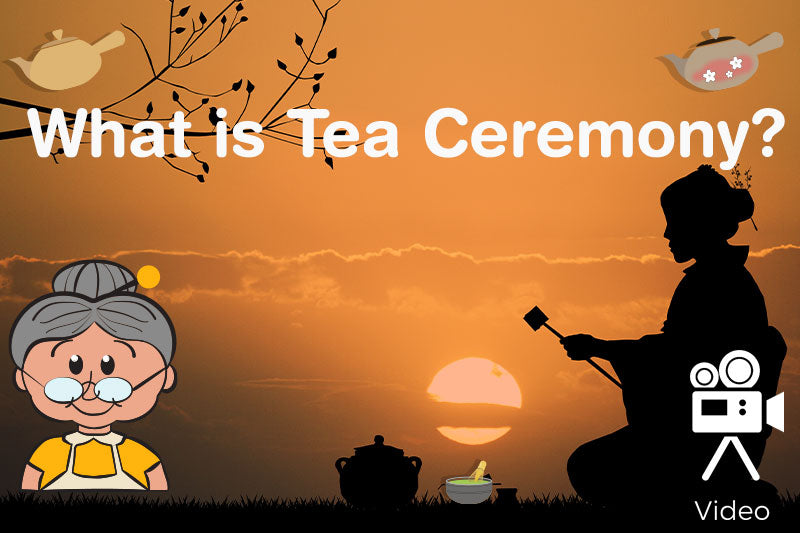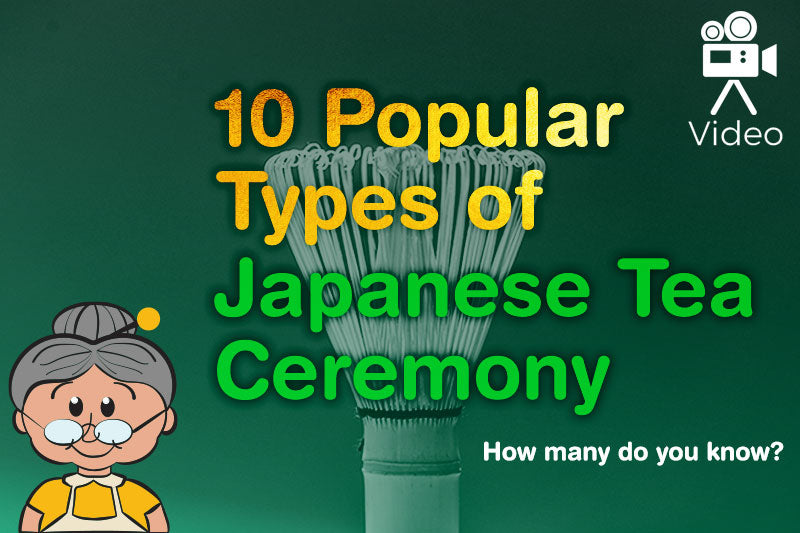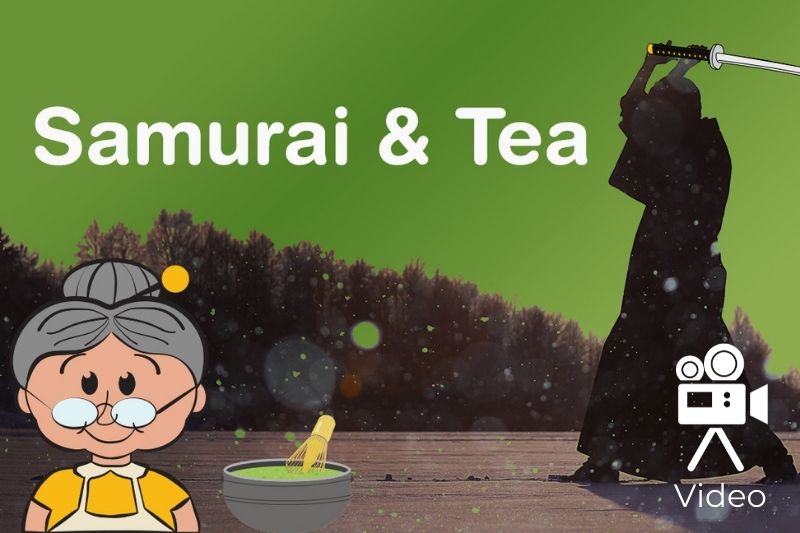A tea ceremony is one of the essential things to do when you appreciate Japanese culture. Visiting Japan and learning how to do a tea ceremony is a refreshing experience. Since you don't want to miss it when you get home, let's reminisce about the tradition and get started with these beautiful matcha ceremony tools that you can purchase on Amazon.
1. Chawan or “tea bowl”
Mino Ware Handcrafted Matcha Tea Bowl
Holding the tea bowl with one hand and mixing matcha with your other hand is easy, thanks to the size of this matcha tea bowl. Mino Ware is known for its high-quality porcelain handicrafts. So get one and imagine making a matcha drink in a Zen Garden.
2. Tsutsu-chawan
With traditional Japanese ceramic pottery in mind, you will be sure that you can feel the tea ceremony vibes if you add this bowl to your tea set. It weighs 250g and has dimensions of 10.5cm width x 9cm height x 10.5cm diameter.
3. Hira-chawan
Hagiyaki Matcha Hira Chawan made by Komei Koto

Another Hagiyaki or Hagiware ceramic-made chawan (tea bowl) that is easy to hold and will surely avoid spilling tea. The shape makes the tea cool off faster than using a regular chawan. Its dimensions are 14.8 cm diameter x 14.8 cm width x 5.5 cm height.
4. Kumidashi-Chawan
Hautall Traditional Matcha Tea Bowl

With 4.5 inches of diameter and 2.7 inches of height, this high-quality handcrafted tea is the perfect size for whisking and holding tea. The good thing is that they are confident that their matcha bowl is made of high-quality materials, to the point that they have customer care where they can offer a prompt refund or replacement in case the buyer does not like the product.
5. Chasen
HARU MATCHA - PESTICIDE FREE - Traditional Handcarved Golden Bamboo Matcha Whisk (100 Prongs)
This 100-prong authentic Japanese matcha whisk makes the matcha creamy quicker than other matcha whisks. It is made of bamboo from the Kansai region of Japan. It is ideal to use this on usucha (thin tea). However, they recommend a matcha whisk with a lower (but still strong) prong count if you want to whisk a koicha (thick tea).
Chasen holder (if you want to include it on the list)
Super SW Porcelain Chasen Stand
The porcelain-made, beautiful red and black whisk stand is great to look at in almost all the matcha sets. Each holder is individually crafted and made of high-quality ceramic.
6. Kama – special tea kettle
Kama “Chagama” Japanese Cast Iron Teapot

Boil water and make tea in your garden or hut with this kama (teapot). Treating your guests well and making matcha in their presence brings tranquility. Because of its long-lasting use, many generations can use this teapot.
7. Hishaku
Frjjthchy Natural Bamboo Japanese Water Ladle
This small ladle is polished and has a long handle for easy grip and control. It is aesthetically perfect for tea ceremonies and gardens. It was assembled firmly and won't break easily, unlike other super-glued water ladles.
8. Futaoki
Suikaen Futaoki Japanese Bamboo ladle stand
You can place your ladle on these 100% natural bamboo futaoki (ladle stands). Environment-friendly and durable, but there may be some natural stains. Suikaen prefers to make futaoki by hand with the hands of craftsmen instead of using modern equipment to preserve the 500-year tea tool-making tradition.
9. Natsume / Usucha
Tokyo Matcha Selection Hanazoroe
Steel natsume with an inner plastic lid. This tea caddy has an old, traditional flower design. It is small yet beautifully made for storing tea leaves and making tea ceremonies look good.
10. Chashaku
There is no need to buy separate items, as the matcha scooper and holder are available in one set. It will make your tea set more beautiful, and you will not have a hard time finding a scoop and a saucer to place it on. Why use a bamboo matcha scoop (chashaku) instead of just a teaspoon? It is because it can accurately measure the amount of tea you need in a cup or a tea bowl.
JapanBargain Bamboo Matcha Scoop Japanese Chashaku
If you already have a chashaku holder, this is what you need to measure your matcha. It measures 7.25 inches long and does not wear out quickly. It works well and is not too flimsy. Despite its good quality, it is cheap compared to other matcha scoops.
11. Fukusa
Fukusa Japanese Tea Ceremony Orange No 6
Don’t forget to clean the chashaku with a silky cloth. A tea ceremony is also known for its cleanliness. It is easy to fold. The beautiful silk quality will surely attract others to learn more about tea ceremonies.
12. Kobukusa
Tea coasters are there to protect the mat and make the matcha setup visually pleasing. Here are the best finds on Amazon:
Jukway 6Pcs 40x40cm Japanese Style Cotton Fabric Squares
These are thick fabrics that, at the same time, are easy to cut with scissors. Moreover, the colors and the flower designs can match any traditional Japanese room.
Tudomro 30 Pieces Japanese Style Fabric Squares 8 x 10 Inch Fabric Bundle Squares
The more designs, the more choices you have. These can also be used for other crafts and clothing, although they are smaller than the previously featured Jukway fabric squares. The color remains bright even after washing several times.
PARAOR 8 x 10 inch 35pcs Cotton Quarters Fabric Bundle Japanese Style
This set of fabrics has the same size as Tudomro but has more than 5 square fabrics.
13. Kobukusami / Dashibukusa
Tea Talent Handmade Natural Bamboo Tablemat Decor
Japanese tea lovers can choose between "Blue and White Linen" and "Natural Color." There are three sizes available. Made of bamboo sticks, it exudes a Zen garden aesthetic. It is easy to clean by shaking it off over the sink and wiping it with a clean, damp cloth.
14. Kensui
Hagiyaki Kensui for Tea Ceremony
The leftover water used for the tea ceremony can be discarded in this bowl. This Kensui bowl is made by craftsmen who know about making Tokoname ware pots and handicrafts. Tokoname is located in Aichi, Japan.
15. Mizusashi
Before using the Kama (teapot where water is boiled), the water is filled in the Mizusashi (small water jug) using a Yakan (water pitcher).
Touga Mizusashi for Tea Ceremony
Measures 13.5cm height, 13cm diameter, and 11.5cm light diameter, this mizusashi is made of stoneware.
Touga Red Lacquer Mizusashi for Tea Ceremony
This mizusashi is made of stoneware and is larger than the previous one. It measures 13.8 cm height, 12.5cm diameter and 11cm light diameter.
16. Yakan
The following can serve as a water pitcher to fill the Mizusashi.
2600ml Japanese Copper Teapot
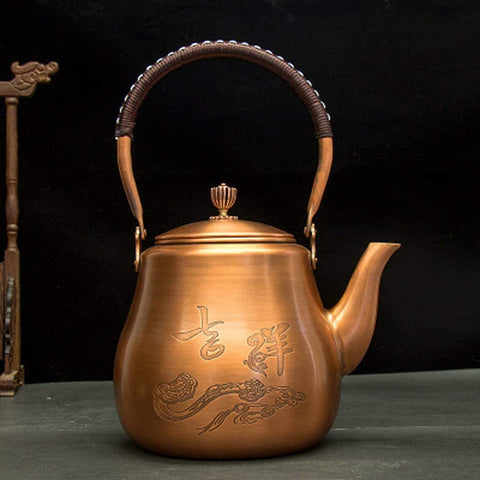
It weighs 2000 grams and can hold up to 2600 ml of water. This copper pot's design is very traditional and can soften boiled water. Although it is expected to turn the copper color inside into black-brown oxide over time, it is still useful and does not affect the water quality.
YJX Enamel Coated Iron Teapot with Stainless Steel Infuser
For a more sophisticated look or retro style, this teapot is for you and can carry up to 1000 ml, or 4 cups, of water. Water boiled in this teapot will become soft and sweet because of the material's long heat preservation. It is a nice decoration for your tea ceremony collection.
17. Ro
We often see the sunken hearth in the tea room. You can have it built in your home, or if you don't want, you can buy a good substitute on Amazon and place it in your garden or anywhere outside.
LEMY 32-inch Outdoor Metal Faux Stone Fire Pit
This fire pit is made of durable steel. It has a strong frame, and you can put wood/charcoal, fire, and your tea pot there. It is easy to assemble and comes with a rain cover to prevent damage when not in use.
Aside from drinking tea, doing a ceremony alone or with guests makes your environment calm and pleasant. Moreover, with high-quality matcha and these tools, you will surely enjoy practicing and honing your skills to make a matcha drink and do an appreciative tea ceremony.
Watch to learn more about different Japanese Tea Ceremony with Obāchan and Kei.
If you like this video, please click here to subscribe to our YouTube Channel so that you don't miss future videos from us. Subscribe to YouTube Channel
Video Length: - 11 minutes 18 seconds
Click to Subscribe to my YouTube Channel
CHARACTERS
Young Kei: A male student who loves all things green tea. While he is most familiar with modern adaptations of Japanese tea such as match late, green tea cake, green tea chocolate, and even bubble tea, he is very interested in the rich tradition of Japanese tea and the culture behind it.
Obāchan: This is ChaCha’s grandmother. She is old and wise and knows all about the history of Japanese Tea. She is very happy that young people like Keiichirou are still interested in tea and enjoys teaching them about traditional tea. Likewise, she is fascinated by all the new types of teas and is always happy to learn from the younger generation.
Set 1: A Japanese style living room
Obāchan tells Young Kei about the various types of equiptment for Tea ceremony
*CRASH* *Sound of pottery braking*
K: Oh no!!!
O: Daijoubu? I heard a large crash, are you okay?
K: Luckily I’m okay but when I was trying to put away some of my tea ceremony equipment, I accidentally dropped one of my favorite tea cups and it shattered all over.
O: I’m glad to hear that you’re okay, never mind the tea bowl
K: Tea bowl? I think you’re confused. What I dropped was a tea cup.
O: That’s where you’re wrong my dear boy. While it does function as a cup, the vessel that we use for tea ceremony is actually called a chawan or “tea bowl” in English.
K: Really? Why is that? Does it vary from a regular tea cup in some way?
O: Let me teach you different tools used for tea ceremony today.
Here is what I will explain.
I will cover many tools, so if you are interested in a specific tool, you can check out in the description of our video, the time code that allows you to click to the portion you would like to watch. Also, scan this barcode or link is in the description below for more information about each tool.
B: Who are you talking to, Obachan?
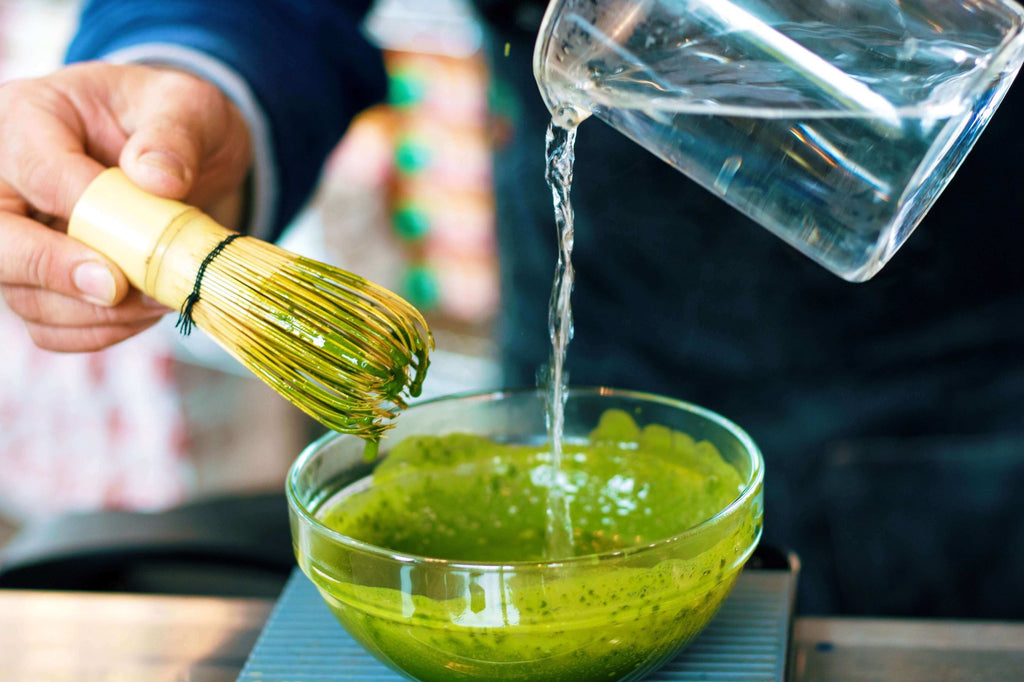
O: For starters, compared to European-style tea cups, the chawan dosen’t have a handle and there are quite a few types of chawan used depending on the type of tea ceremony you are attending.
K: I’m confused, why would you ever need more than just one type of tea bowl? After all, all the bowl does is bring the tea from the pot to your mouth right?
O: The Chawan can have various properties that will enhance the flavor of the tea depending on the season. Take for example the Tsutsu-chawan鉄茶碗. This type of tea bowl is typically longer and made for winter. Now, why do you think that is?
K: Hmmmm… longer hug…and winter… Oh! I know! It’s because if its longer, having less surface area will make it so that the tea will have less exposure to the air, meaning that the tea can retain heat longer!
O: Oh my! You certainly are smar-tea, Kei.
K: (pause 1 sec) Really, Obachan?
O: … (pause 0.5 sec)
K: Does that mean that there is also a type of tea bowl made for summer? Maybe something that is short and wide so that the tea can cool down faster?
O: You sure do catch on quick! That type of tea bowl is called a Hira-chawan平茶碗 and just as you said, the Hira-chawan is short and stout to help the tea cool off faster in the summer.
K: Wow! The tea masters really did think of everything!
O: They sure did! Another type of tea bowl with special properties is the Kumidashi-Chawan.くみだし茶碗 This type of tea bowl has an outward curving lip so that the aroma of the tea can seep out and entice the guest to take a sip.
K: Now that we are on the topic, what are some of the other types of tools and equipment needed for the tea ceremony? I’m beginning to doubt that I know anything about tea ceremony at all!
O: Haha, don’t doubt yourself. Tea ceremony is very complex and even the masters are still learning something each and every time they pour a new glass of tea. I’m sure one piece of equipment you are well aware of is the chasen. 茶筅
K: Chasen? Oh! You mean the bamboo whisk?
O: Precisely!
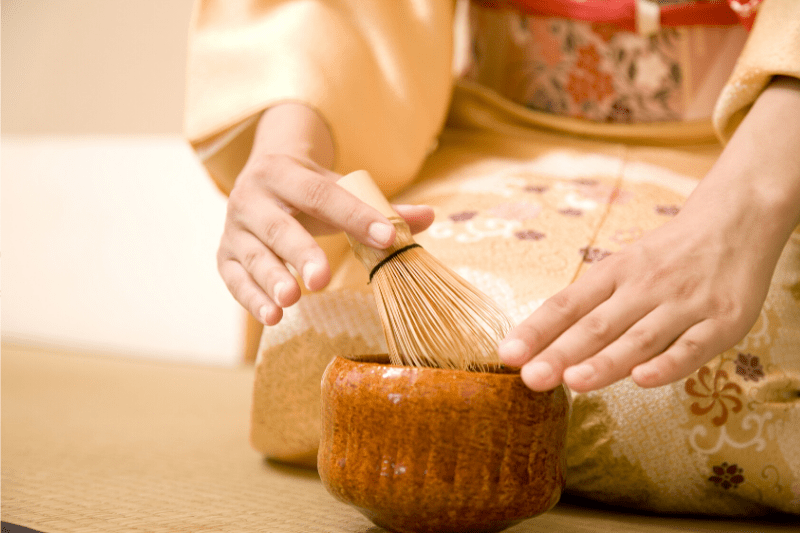
K: I know that one! That’s the single piece of bamboo that has been cut into super-thin sections so that it can be used to whip matcha! The flexible nature and durability of the bamboo are ideal for mixing tea and creating a bubbly texture when done right!
O: Correct! And do you know what the name of the special tea kettle in Japanese is?
K: Oh… we learned this….it’s a Kama!釜
O: Right again! The Kama is used to boil water for making tea and is typically a round, stout vessel cast from copper or iron. Often times the kama is passed around in the family from generation to generation and is unique in design and style.
K: I forget, what is the ladle used to pour water from the Kama into the Chawan called again?
O: That would be the Hishaku柄杓, a long bamboo ladle that transfers water from the kettle to the bowl. It’s made from bamboo because metal would heat up too fast, making it hard to hold, and wood would warp from the heat of the hot water. When not in use, the Hishaku rests on a special holder called a Futaoki蓋置.
K: The Futaoki? You mean the round little block of bamboo or ceramic with a divet? Doesn’t that also hold the lid of the Kama sometimes?
O: Yes indeed. When the tea ceremony begins, the kettle lid or Futa is taken and placed on the top of the Kama to help keep the water warm.
K: I have a question. What is the special little box that holds the tea before we brew it called? If I remember correctly, there are two different types?

O: You sure do have an eye for detail. That would be the tea caddy and as you said, there are two different types. Natsume棗 is made from a thin lacquered wood and is meant to hold for usucha or thin tea ceremonies. Thin tea is much higher quality, hence the design on the tea caddy is typically more eloquent than its counterpart, the Chaire. A Chaire is for thick tea and is a bit longer and chunkier.
K: The little spoon we use to take tea out of the tea caddies is called the Chashaku茶杓 right? We use that for measuring out how much tea to put into the cup before adding the water.
O: Correct again, and the piece of cloth we use to clean the Chashaku is the Fukusa袱紗. This special piece of cloth is usually made from a single piece of solid-colored silk without any pattern. Men will usually use a purple Chashaku and the traditional color for women is red or orange.
K: Oh! I got a really beautiful deep purple one for my birthday last year! I had no idea that men and women used different colors though!
O: It’s a small detail, but that is what makes tea ceremony such an impressive art form to learn.
K: On the topic of fabric, what are those little square pieces of cloth we put down on the table for?
O: I believe you are referring to the Kobukusa古帛紗? That would be a 6-inch square piece of fabric used as a coaster for when you put your tea bowl down during the tea ceremony. It is not only stylish but also protects the table as well. Oftentimes guests will bring their own Kobukusa in a special wallet called the Kobukusami古帛紗身.
K: I’ve heard my teacher also call it a Dashibukusaだし袱紗, is that the same?

O: Indeed it is. Some other important pieces of a tea set would be the Kensuiけんすい, the pot where we dispose of any leftover water, the Mizusashi水さし, the cold water container used to refill the Kama, and the Yakanやかん, the Yakan, the water pitcher that we use to refill the Mizusashi at the end of the tea ceremony.
K: Wow! There is so much! Surely that is everything, right?
O: you’re forgetting the very heart of the tea ceremony, my dear boy.
K: The heart?
O: The heart of the tea ceremony is the sunken hearth in the tea room called the Ro炉.
K: The Ro?
O: The Ro is a special hole in a tatami floor that holds the kama and heats up the water. This is only used in the autumn and winter, however.
K: What is used to heat the water in the spring and summer then?
O: That would be the Furo. This brazier is typically made from unglazed clay, however, iron and bronze ones are also used at times depending on the host.
K: My head is spinning! There are so many parts of the tea ceremony I don’t even know where to begin!
O: You can begin with not running late to your tea ceremony class! Doesn’t it start in just a few minutes?
K: Yikes! I’ve gotta run! Thanks for the lesson Obāchan!
Kei disappears
O (drinking tea): Oh boy. He is always in a rush.
Again, if you are interested in learning more about any of the tools, please check the link in the description below. And while at it, please subscribe to the channel so you don’t miss any new episodes. Thank you very much for watching.
• Disclosure: I only recommend products I would use myself, and all opinions expressed here are my
own. This post may contain affiliate links that I may earn a small commission at no additional cost to you.
The commission also supports us in producing better content when you buy through our site links.
Thanks for your support.
- Kei and Team at Japanese Green Tea Co.
Get Free Bonus Books

Sign up for free to the Green Tea Club to get advice and exclusive articles about how to choose Japanese Tea, and tips, tricks, and recipes for enjoying Japanese tea.
About the author
Kei Nishida
Author, CEO Dream of Japan
Certification: PMP, BS in Computer Science
Education: Western Washington University
Kei Nishida is a passionate Japanese green tea connoisseur, writer, and the founder and CEO of Japanese Green Tea Co., a Dream of Japan Company.
Driven by a deep desire to share the rich flavors of his homeland, he established the only company that sources premium tea grown in nutrient-rich sugarcane soil—earning multiple Global Tea Champion awards.
Expanding his mission of introducing Japan’s finest to the world, Kei pioneered the launch of the first-ever Sumiyaki charcoal-roasted coffee through Japanese Coffee Co. He also brought the artistry of traditional Japanese craftsmanship to the global market by making katana-style handmade knives—crafted by a renowned katana maker—available outside Japan for the first time through Japanese Knife Co.
Kei’s journey continues as he uncovers and shares Japan’s hidden treasures with the world.
Learn more about Kei

![1 X [Matcha Bowl] Kaneta Tenmokunagashi Matcha Chawan (Standard version)](https://cdn.shopify.com/s/files/1/1423/7286/files/1_X_Matcha_Bowl_Kaneta_Tenmokunagashi_Matcha_Chawan_Standard_version_480x480.jpg?v=1656054357)




![TOKYO MATCHA SELECTION - [VALUE] Hanazoroe : Steel Tea Caddy Can (S) for 100g leaf - Japanese Traditional Design [Standard ship by SAL with Tracking number...](https://cdn.shopify.com/s/files/1/1423/7286/files/51J1O7mOJ4L._AC_480x480.jpg?v=1655963657)











